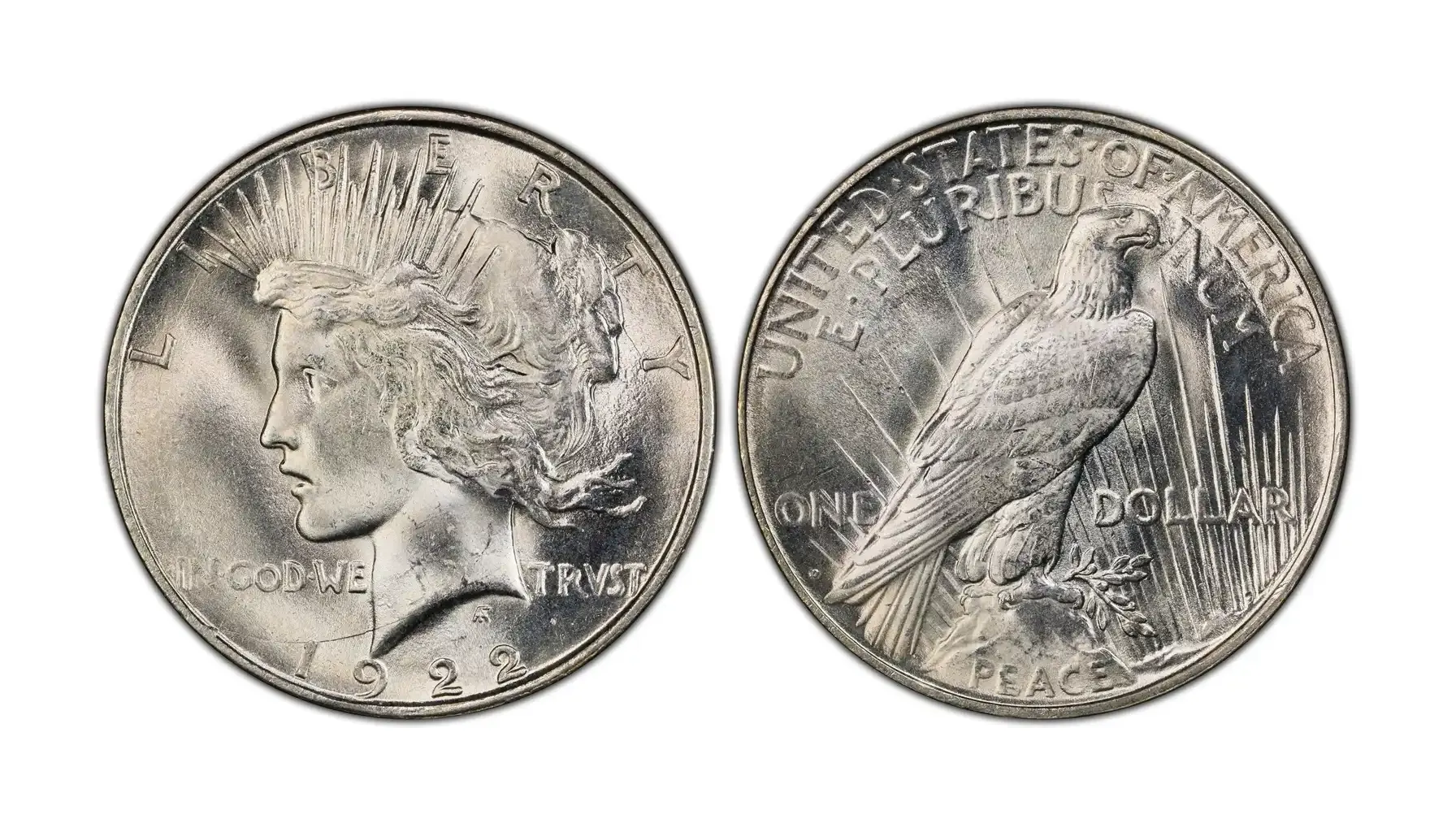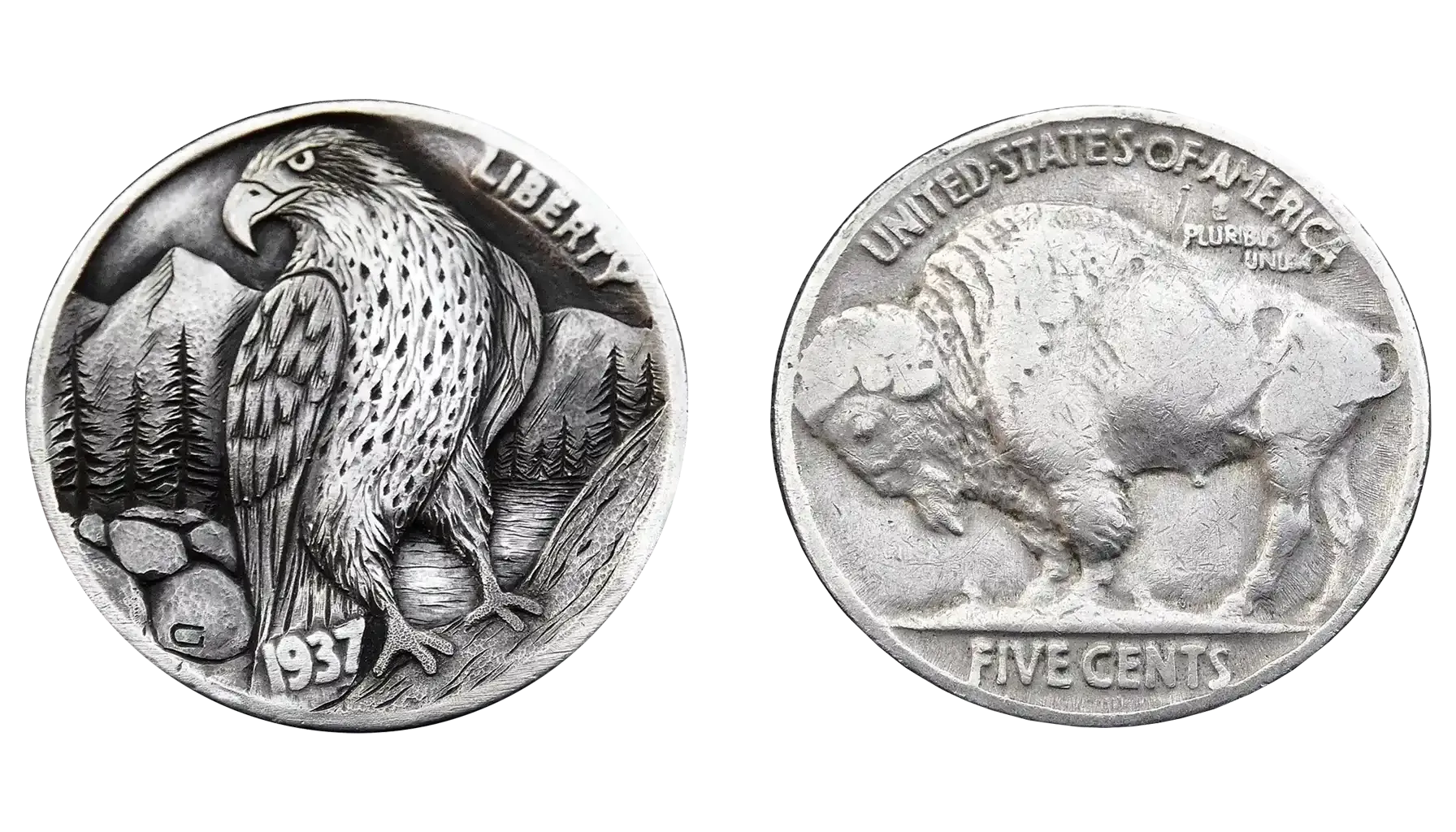Contents:
- 1948 Lincoln Wheat Penny Specifications
- History Behind
- How Much Is a 1948 Wheat Penny Worth? A Breakdown by Mint & Grade
- Color Designation & Value of 1948 Wheat Penny
- Is a 1948 Wheat Penny Worth Anything? How to Evaluate It
- 1948 Penny Error List with Pictures
- Recent Auction Results (Real Examples)
- Use a Coin Scanner App
- FAQs
In the world of numismatics, value often hides in the details: the mint mark, the preservation, the strike quality, and the occasional mint-made mistake.
If you’ve come across a 1948 penny for sale, this guide will show you how to separate the common from the collectible—and maybe even get an opportunity to become richer.
So, how much is a 1948 penny worth? And how can the best free coin identifier app help you find it out?
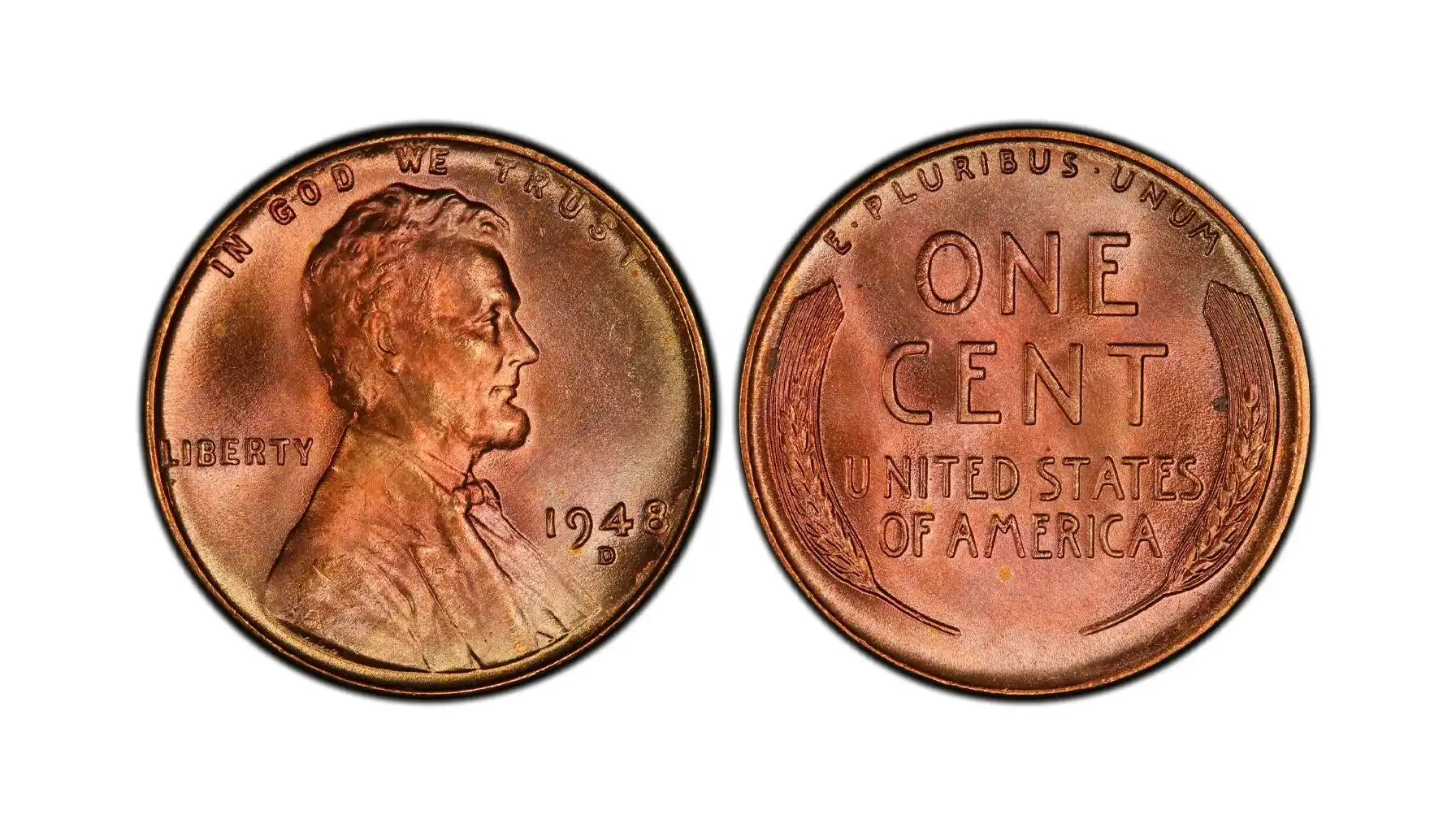
1948 Lincoln Wheat Penny Specifications
Specification | Details |
Official Name | Lincoln Wheat Cent |
Denomination | 1 Cent (U.S. Penny) |
Year of Issue | 1948 |
Mint Marks | No Mint Mark (Philadelphia), D (Denver), S (San Francisco) |
Total Mintage | 571,942,500 (combined) |
• Philadelphia | 317,570,000 |
• Denver | 172,637,500 |
• San Francisco | 81,735,000 |
Designer | Victor David Brenner |
Composition | 95% Copper, 5% Tin and Zinc (bronze alloy) |
Weight | 3.11 grams |
Diameter | 19.05 mm (0.75 inches) |
Thickness | 1.52 mm |
Edge | Plain (smooth) |
Obverse Design | Abraham Lincoln’s bust |
Reverse Design | Two wheat ears flanking “ONE CENT” |
Strike Type | Business Strike |
Proof Coins Issued | No |
History Behind
The 1948 penny is part of the Wheat Cent series, officially called the Lincoln Wheat Ear Cent, which ran from 1909 to 1958. Designed by Victor D. Brenner, the obverse features Abraham Lincoln—an American first for depicting a real person on circulating currency—while the reverse bears two stylized wheat ears symbolizing prosperity and agricultural heritage.
By 1948, the U.S. was in a post-war recovery period. Inflation was rising, coins were being hoarded, and demand for small change surged. As a result, the Mint produced over 571 million pennies that year, across three locations:
Philadelphia (1948 penny no mint mark)
Denver (1948 penny D mint mark)
San Francisco (1948 wheat penny S mint mark)
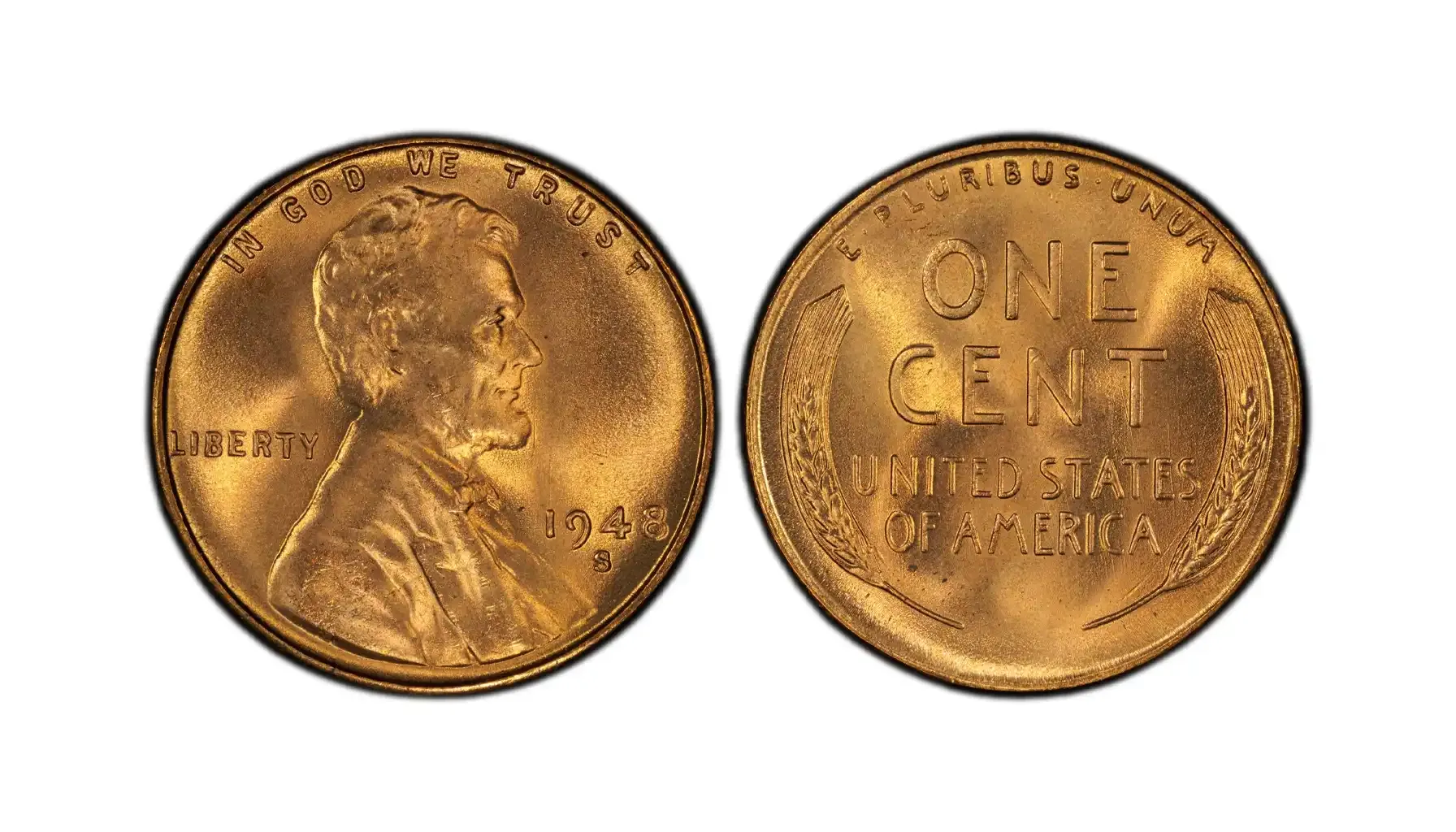
How Much Is a 1948 Wheat Penny Worth? A Breakdown by Mint & Grade
Although these coins were mass-produced, they hold considerable appeal to collectors when preserved in top condition or struck with visual perfection. Here's a breakdown of average prices based on mint mark and grade.
Type | Mintage | Circulated (G–VF) | Mint State (MS65) | Top Grades (MS67 RD) |
1948 penny value no mint mark | 317,570,000 | $0.03 – $0.25 | $5 – $25+ | Up to $150 |
1948 D wheat penny value today | 172,637,500 | $0.04 – $0.30 | $8 – $30+ | Up to $180 |
1948 S wheat penny value today | 81,735,000 | $0.05 – $0.40 | $10 – $40+ | Up to $500+ |
Color Designation & Value of 1948 Wheat Penny
Grade | BN (Brown) | RB (Red-Brown) | RD (Red) |
MS60 | $2 – $4 | $5 – $8 | $10 – $15 |
MS63 | $5 – $8 | $10 – $15 | $20 – $30 |
MS64 | $8 – $12 | $15 – $25 | $30 – $50 |
MS65 | $12 – $18 | $25 – $40 | $50 – $80 |
MS66 | $20 – $35 | $40 – $60 | $90 – $150 |
MS67 | $60 – $100 | $150 – $225 | $300 – $500+ |
Color Definitions (Used by PCGS, NGC, etc.):
BN (Brown): Coin has toned to a dark brown color due to oxidation; most common in circulated and lower-grade examples.
RB (Red-Brown): Coin retains some of its original mint red luster—usually about 15–85%. Transitional and more desirable.
RD (Red): Coin exhibits 95% or more of its original red mint color. These have a higher value of a 1948 wheat penny, especially in higher grades.
Attention! Only certified coins with “RD” designation in MS66+ truly break the $100+ range.

Is a 1948 Wheat Penny Worth Anything? How to Evaluate It
Knowing what makes a coin valuable starts with understanding how it’s judged. Professional graders assess based on:
1. Strike Quality
Well-struck coins have crisp details in Lincoln’s coat, the wheat stalks, and lettering. Weak strikes are less valuable.
2. Luster & Color
Red coins that retain their original mint brilliance are prized by collectors and command significant premiums.
3. Contact Marks
Fewer marks = higher grade. Look for clean fields and a sharp rim under 10x magnification.
4. Mint Mark
Located under the date:
No mark = Philadelphia = 1948 wheat penny no mint mark
“D” = Denver = 1948 D penny value
“S” = San Francisco (often worth more in higher grades) = 1948 S penny value
1948 Penny Error List with Pictures
1. Doubled Die Obverse (DDO)
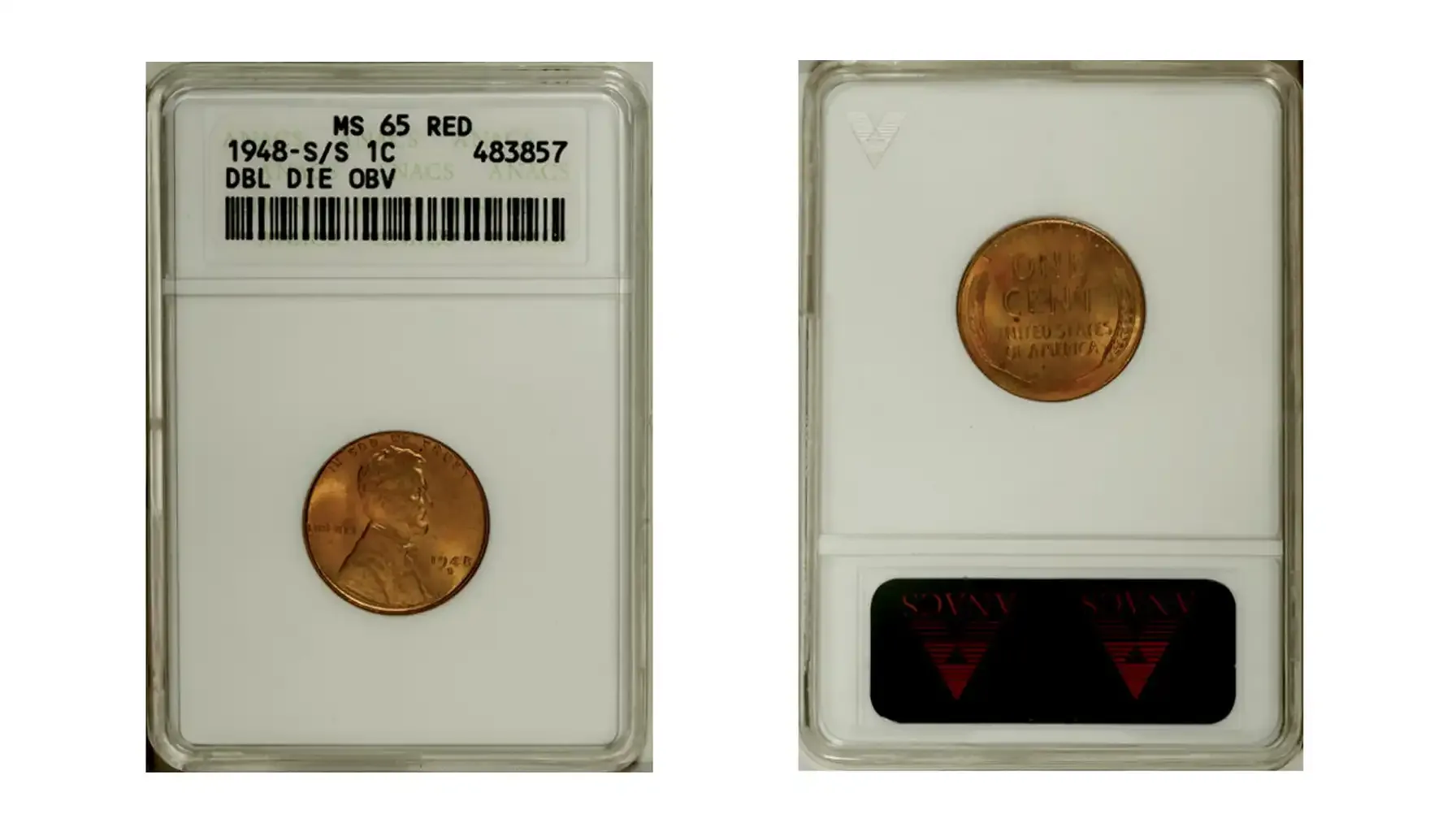
It’s a valuable 1948 wheat penny error. A Doubled Die Obverse occurs when the obverse die receives two slightly misaligned impressions from the hub, causing doubling on design elements.
What to Look For:
Clear doubling on LIBERTY
Doubling on IN GOD WE TRUST
Slight separation or notching on the 1948 date
Best seen under 10x magnification or higher
Is a 1948 penny worth anything if it has such an error?
Circulated examples: $40 – $100
MS63–MS65 RD: $150 – $300+
Scarce in higher grades; few certified examples exist
2. Repunched Mint Mark (RPM)

RPMs happen when the mint mark (D for a 1948-D wheat penny error or S for a 1948-S wheat penny error) is hand-punched into the die more than once at different angles or positions, producing a shadow or overlapping letter.
What to Look For:
Seen only on 1948-D and 1948-S pennies
Doubling or “echo” of the mint mark below, beside, or above the main mark
Most visible under a loupe or microscope
How much is a 1948-D wheat penny worth, and a S mint mark as well?
In XF to AU: $15 – $40
MS63–MS65 RB or RD: $60 – $120
Scarcer RPM varieties (D/D North or S/S Tilted) may reach $200+
3. Off-Center Strike

An Off-Center Strike happens when the planchet is misaligned during striking, causing the design to appear shifted and part of the coin to be blank.
What to Look For:
Design visibly off-center by 5% to 80%
The more off-center and well-centered the date, the more valuable
Coins with visible date and mint mark command stronger premiums
What is a 1948 wheat penny worth?
Minor (5–10%): $20 – $50
Moderate (20–40%) with full date: $75 – $150
Major (>50%) with full date: $200+
4. BIE Die Break
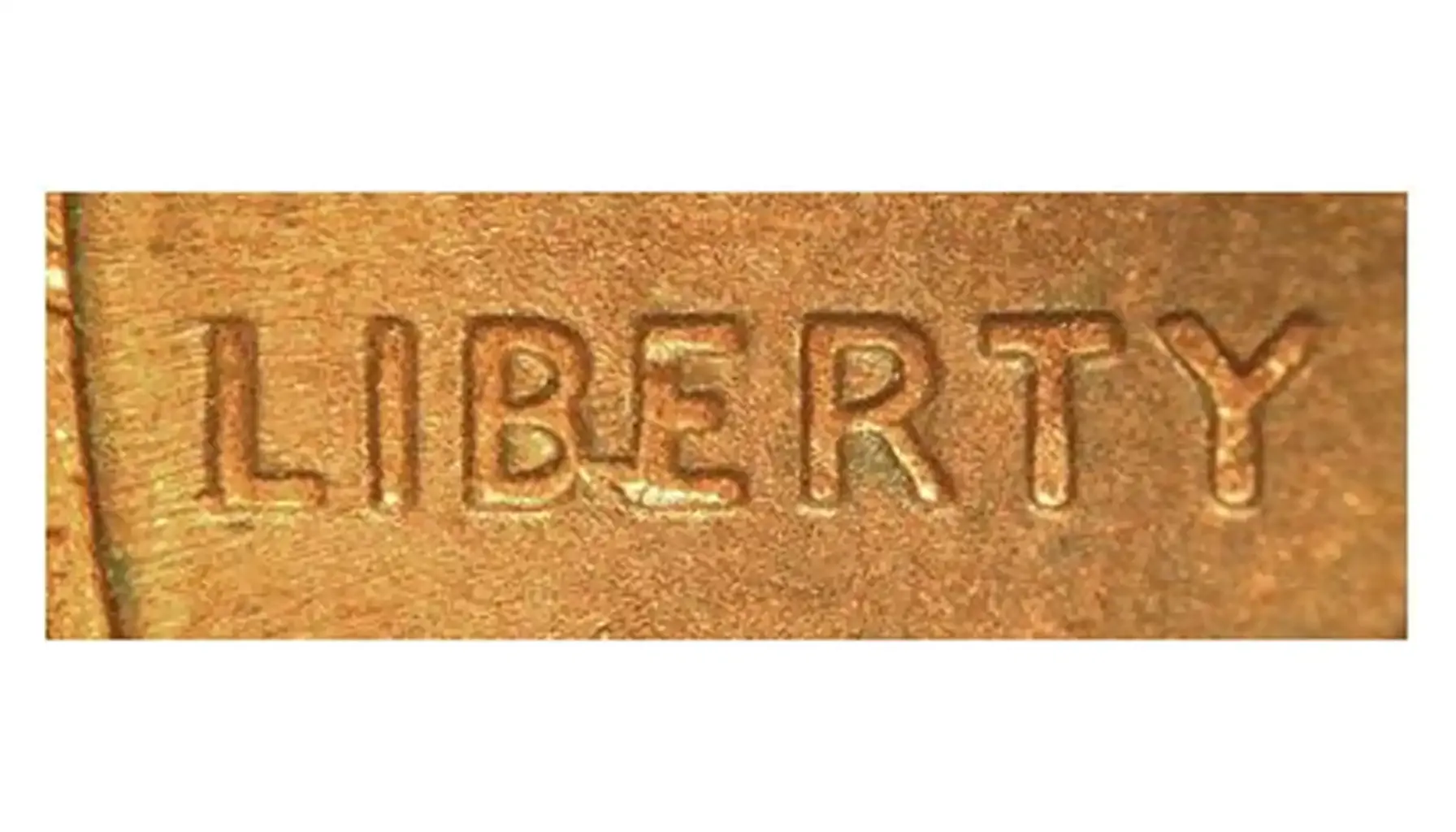
A BIE error is caused by a die crack that forms between the “B” and “E” in LIBERTY, creating what looks like a capital letter "I" between the letters.
What to Look For:
Vertical blob or line between “B” and “E” in LIBERTY
Occurs most frequently in the 1940s and early 1950s
Common among collectors of die break varieties
Estimated value:
Average examples: $5 – $15
Sharp, dramatic breaks: $20 – $40
Premium for uncirculated coins with full red color
5. Struck Through Error
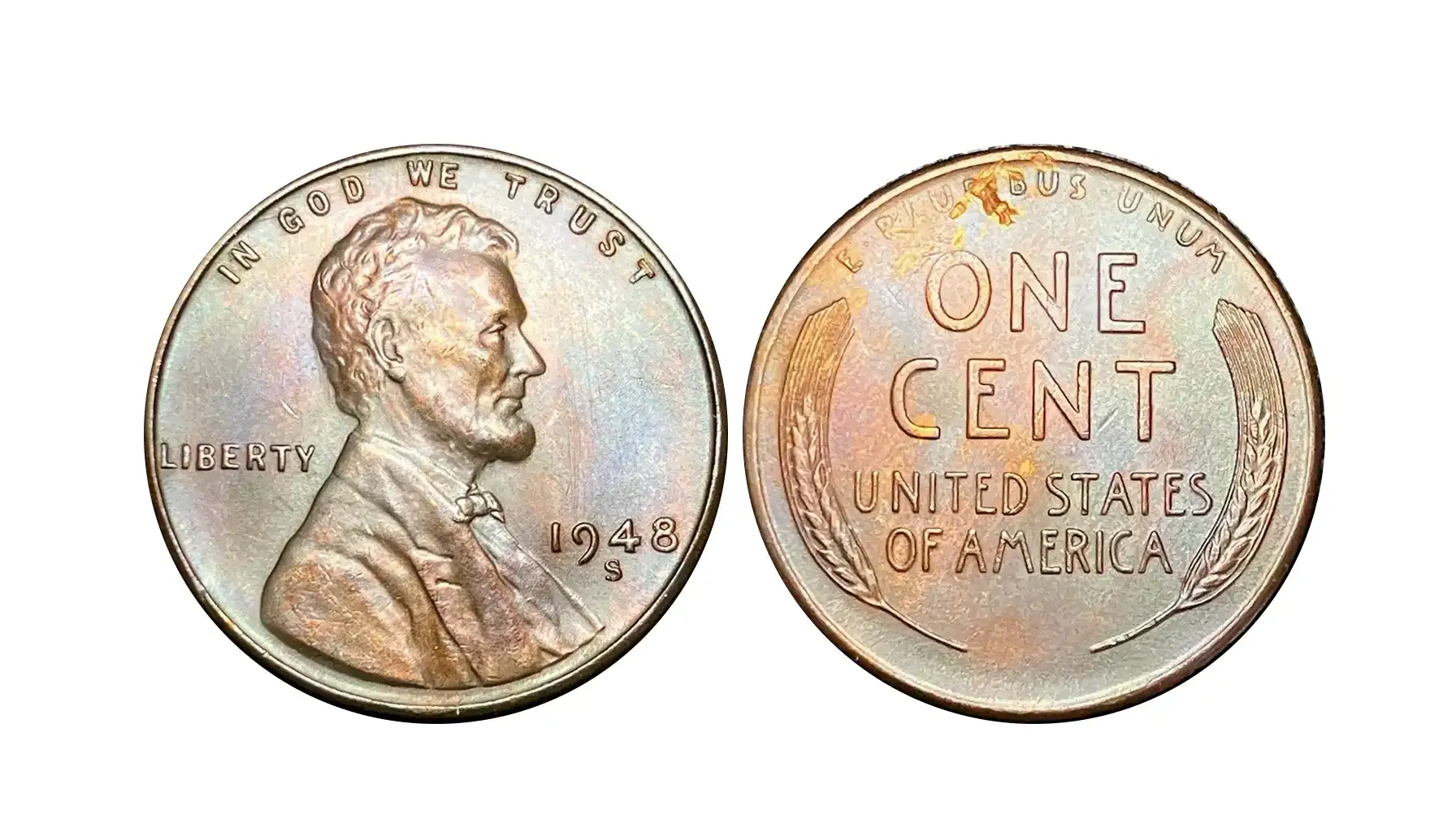
A Struck-Through Error occurs when debris like wire, thread, or grease comes between the die and the planchet, preventing full design transfer.
What to Look For:
Flattened or missing portions of the design
Indented, smooth, or “ghosted” areas
Unnatural texture or loss of detail in one area
Estimated value of a 1948 wheat penny D, S, no mint mark:
Light or minor strike-through: $15 – $40
Moderate strike-through with visible effect: $50 – $100
Dramatic or unusual objects (e.g., wire): $150+
6. Clipped Planchet
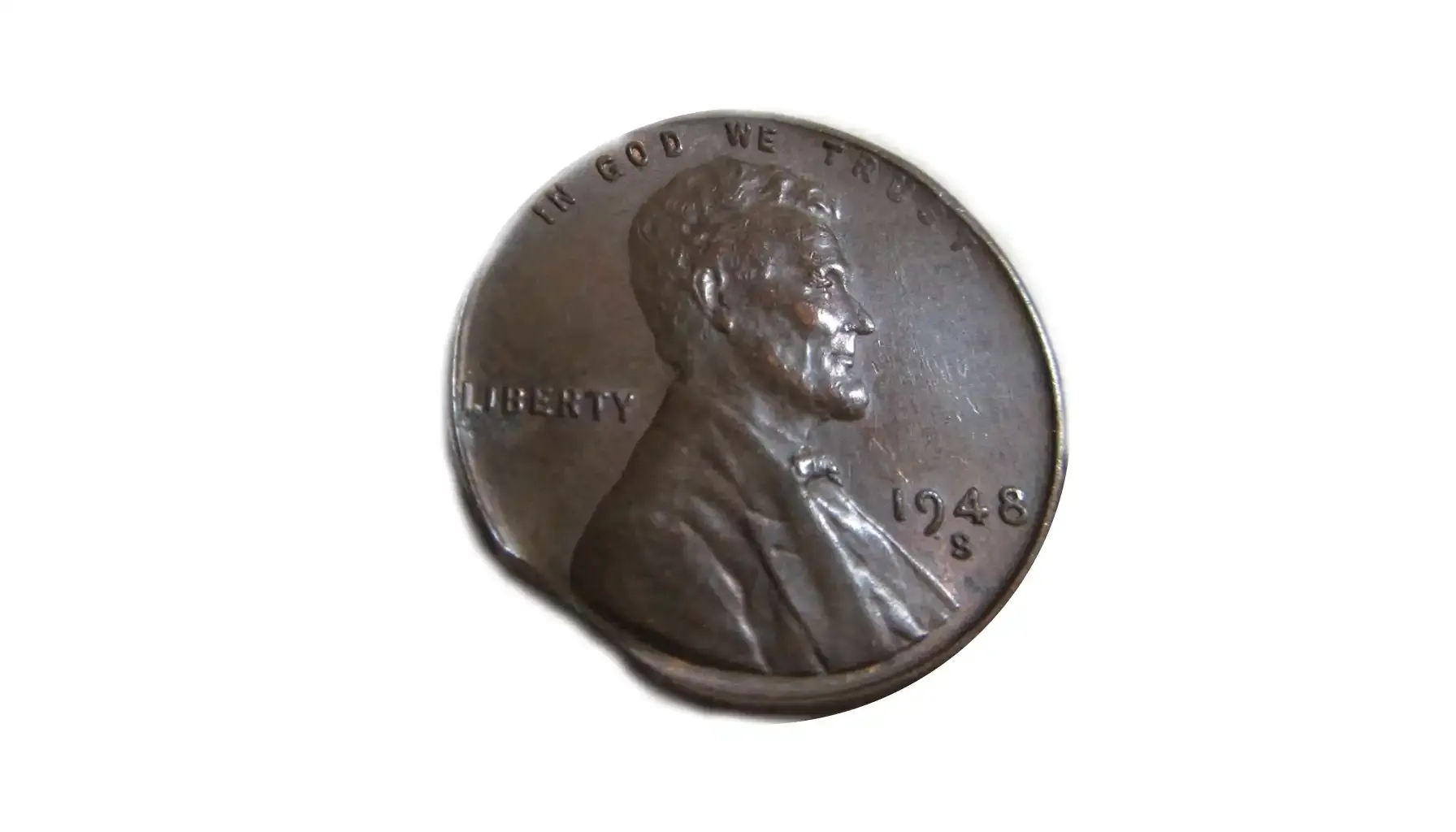
Clipped Planchets occur when the blank metal strip is misfed into the blanking press, producing coins with missing curved or straight edges.
What to Look For:
Smooth, curved “bite” taken from the edge of the coin
Rim distortion or “metal flow” near the clip
Authentic clips have a flowing metal texture, not sharp cuts
Estimated value:
Minor clip: $20 – $50
Large or well-centered clip: $60 – $100+
Full-date coins with dramatic clips can exceed $150
7. Broadstrike (No Rim Error)

A Broadstrike occurs when a coin is struck without the collar die in place, causing the planchet to expand beyond normal diameter.
What to Look For:
Flattened and slightly larger than a normal cent
Missing raised rim
Uniform design with stretched appearance
Estimated value:
$25 – $60 depending on condition and expansion
Higher value if the coin is Mint State and well-centered
Recent Auction Results (Real Examples)
Type | Grade & Color | Auction Price | Date | |
1948 wheat penny value no mint mark (Philadelphia) | MS67 RD | $10,350 | Heritage Auctions | Jan 2012 |
1948-D penny value (Denver) | MS67 RD | $1,020 | Heritage Auctions | Dec 2022 |
1948-D (Denver) | MS67 RD | $480 | Heritage Auctions | Nov 2023 |
1948-D (Denver) | MS65 BN | $601 | Heritage Auctions | Feb 2023 |
1948-S penny value (San Francisco) | MS67 RD | $89 | Heritage Auctions | Jul 2023 |
1948-S (San Francisco) | MS67 RD | $192 | Heritage Auctions | Aug 2023 |
1948-S (San Francisco) | MS67+ RD | $1,020 | Heritage Auctions | Dec 2022 |
1948-S (San Francisco) | MS67+ RD | $456 | Heritage Auctions | Nov 2023 |
1948-S (San Francisco) | MS67+ RD | $288 | Heritage Auctions | Jun 2023 |
Use a Coin Scanner App
Want to know how much is a 1948 S penny worth? Not confident in your grading skills? Tools like Coin ID Scanner let you:
Take a photo of your coin
Identify it in seconds
Get real-time market value estimates
Manage your collection digitally
The 1948 Wheat Penny may not be rare by mintage, but condition, color, and unique characteristics can shift its value.
How much is a 1948 D penny worth? Don’t underestimate the price.
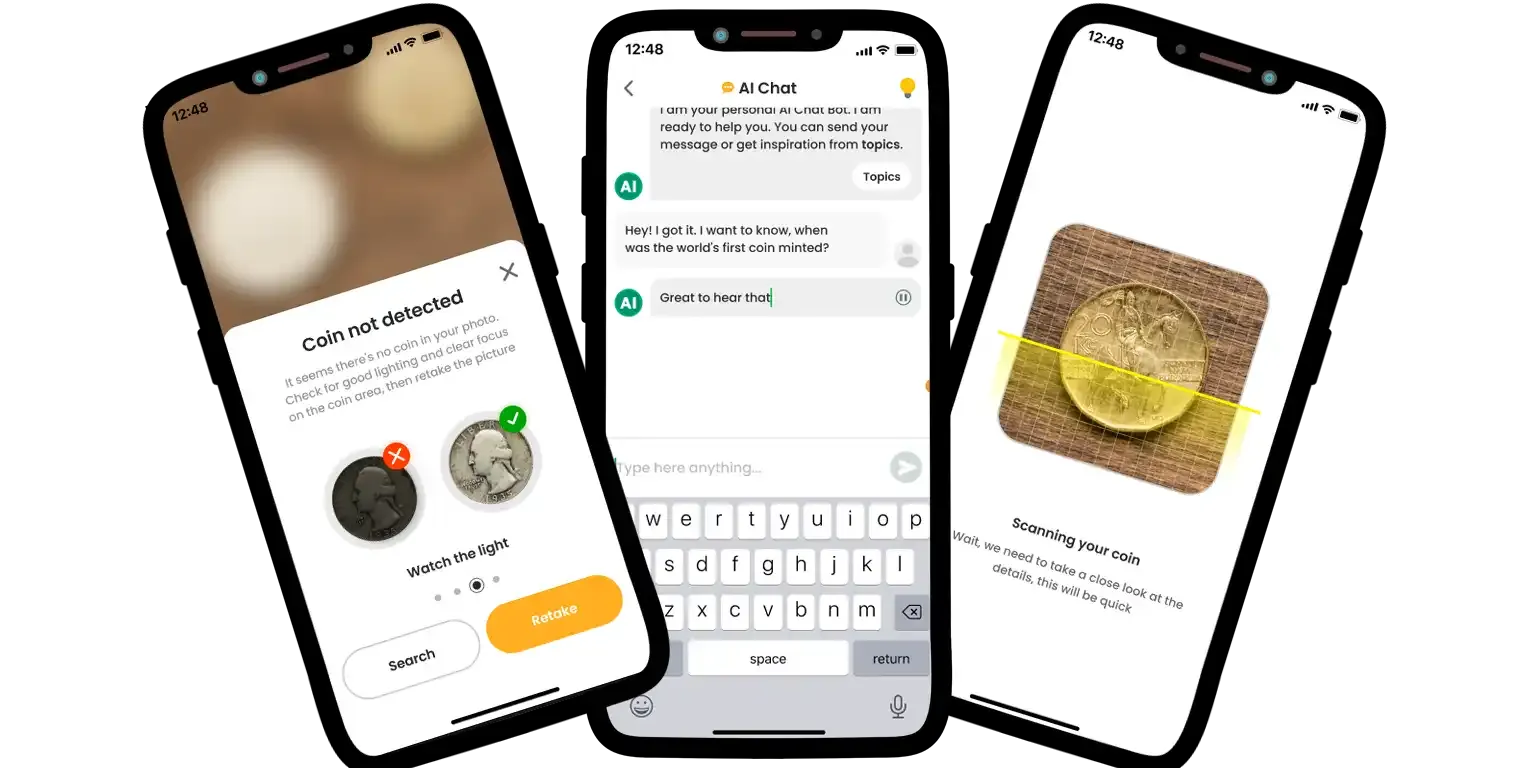
FAQs
1. Is the 1948 Wheat Penny made of valuable metal like silver?
No.
All 1948 Lincoln Wheat cents were struck from a bronze alloy consisting of 95% copper and 5% tin and zinc. This composition was standard for most U.S. cents minted from 1909 until mid-1982.
However, copper does give the coin intrinsic metal value. When copper prices spike, even common Wheat pennies in bulk can be sold to collectors or bullion buyers for a slight premium—but it’s illegal to melt U.S. cents for metal content.
Not 1948 silver penny, not rare metal
Still desirable for age and design
Legal tender with collector premiums based on condition, not metal content

2. How can I tell if my 1948 penny is cleaned or altered?
Surface cleaning can ruin a coin’s value.
Many older Wheat pennies, including 1948 issues, were aggressively cleaned by well-meaning owners hoping to make them look shiny and “new.” Unfortunately, this destroys the natural patina and reduces collector appeal.
Signs a coin has been cleaned:
Unnaturally bright or pinkish tone
Fine scratches across the fields or devices (especially from abrasive cloths)
Lack of mint luster despite a bright surface
A “dull shine” or uniform brightness across high and low areas

3. Can 1948 Wheat Pennies be found in circulation today?
Yes, but rarely.
While it's increasingly uncommon, 1948 Lincoln cents do still turn up in circulation, especially in older regions of the U.S., in bank rolls, or in coin-counting machine rejections. Most of these will be well-worn and brown (BN) in color, worth around 3 to 10 cents.
Where to find them:
Coin roll: Search through rolls of pennies from the bank.
Estate sales or garage sales: Often overlooked by non-collectors.
Inherited coin jars or family collections.

